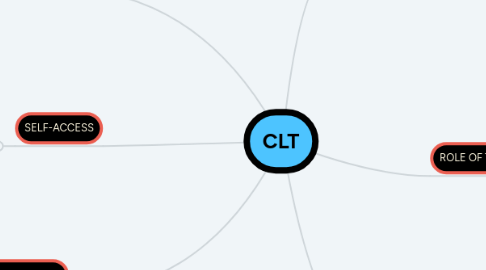
1. LEARNER GENERATED SYLLABI
1.1. Syllabus
1.1.1. the creation of the CEF
1.1.1.1. created as a consensus on systems of validationof language ability
1.1.1.2. Is cetralised and inflexible
1.1.1.3. explain the skills a student is spected to have on each stage
1.1.2. learner generated syllabi
1.1.2.1. it is designed according totheir own perceived needs, the teacher and students would discuss and impossed syllabus and make some changes.
2. SELF-ACCESS
2.1. banks of alternative ctivities
2.1.1. learners would select and work on activitiesthat they perceive to be the most useful to themselves.
3. LEARNER ERROR AND EVALUATION
3.1. Error
3.1.1. is seen as natural there is acceptance of the fact that despite having a limited linguistic knowledge, students can still be succesful communicators.
3.2. Evaluation
3.2.1. linguistic competence
3.2.1.1. is knowledge and mastery of the underlying system of rules.
3.2.2. communicative competence
3.2.2.1. language use in a social context or situation, students need not only input but output to learn.
4. ROLE OF THE TEACHER
4.1. Facilitator
4.2. Co-comunicator
4.3. Advisor
4.4. Manager
5. ROLE OF THE LEARNER
5.1. Learner autonomy
5.1.1. self-directed learning
5.1.2. creates a more learner-centred classroom
5.2. Learner training
5.2.1. the student needs to learn how to learn
5.2.2. the student is able to negociate meaning according to the use of the language to create meaningful learning.
5.2.3. students are responsible for their own learning
6. SMALL GROUP AND PAIR WORK
6.1. Collaborative learning
6.1.1. is fundamental in the development of competence in language, language learning is seen as social process of meaning construction.
